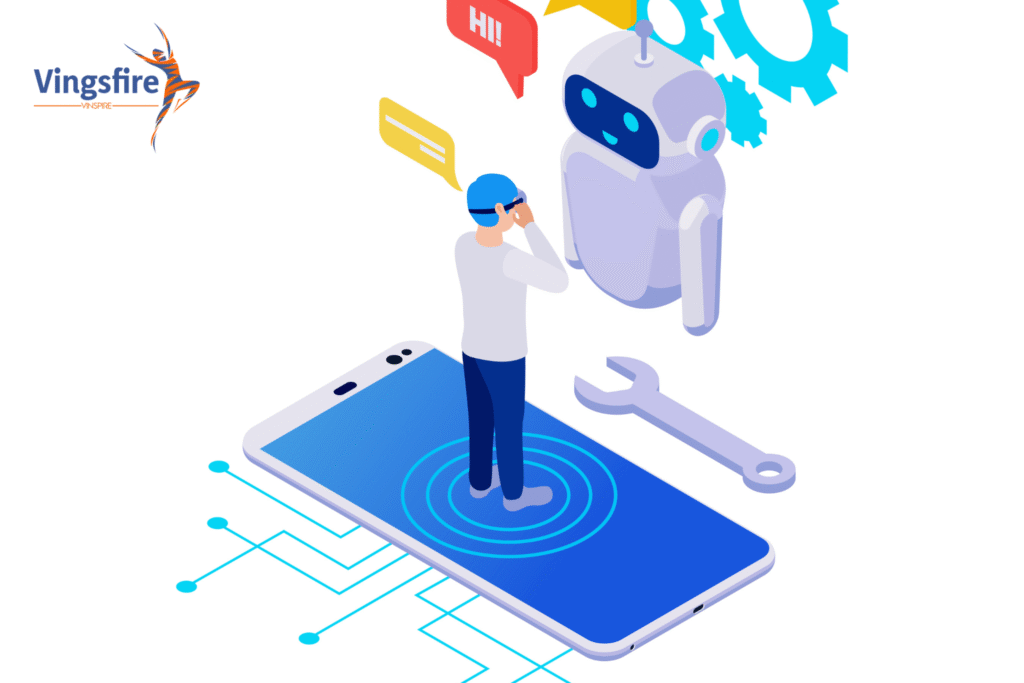
The world is witnessing an unprecedented transformation as AI software development becomes the driving force behind business innovation. From predictive analytics to autonomous decision-making systems, AI software development is creating applications that think, learn, and adapt. This comprehensive guide explores everything you need to know about modern AI software development, including cutting-edge methodologies, implementation strategies, and how Vingsfire delivers enterprise-grade AI solutions that drive real business impact.
Section 1: Understanding Artificial Intelligence Software Solutions
What is Artificial Intelligence Software Solutions?
Artificial Intelligence Software Solutions refers to the process of creating applications that incorporate artificial intelligence capabilities to perform tasks that traditionally required human intelligence. Unlike conventional software, Artificial Intelligence Software Solutions focuses on building systems that can:
- Learn from data patterns
- Make predictions and decisions
- Continuously improve performance
- Adapt to new information
Key Components of Artificial Intelligence Software Solutions
- Data Processing Engine: Handles data collection and preparation
- Machine Learning Core: The AI/ML algorithms powering intelligence
- Application Interface: How users interact with the AI capabilities
- Feedback Mechanism: Allows continuous learning and improvement
Section 2: The Artificial Intelligence Software Solutions Lifecycle
1. Problem Identification & Feasibility Study
- Business need analysis
- Technical feasibility assessment
- ROI potential evaluation
2. Data Strategy & Infrastructure
- Data collection pipeline design
- Storage and processing architecture
- Quality assurance protocols
3. Model Development & Training
- Algorithm selection
- Feature engineering
- Training and validation
- Performance optimization
4. Software Integration
- API development
- User interface design
- System integration
- Security implementation
5. Deployment & Scaling
- Cloud/edge deployment strategies
- Load testing
- Monitoring systems setup
6. Continuous Improvement
- Performance tracking
- Model retraining
- Feature enhancement
Section 3: Types of Artificial Intelligence Software Solutions
1. Predictive Analytics Systems
- Demand forecasting
- Risk assessment
- Preventive maintenance
2. Natural Language Processing Applications
- Chatbots and virtual assistants
- Sentiment analysis
- Document processing
3. Computer Vision Solutions
- Facial recognition
- Quality inspection
- Medical imaging
4. Autonomous Decision-Making Systems
- Fraud detection
- Dynamic pricing
- Supply chain optimization
5. Generative AI Applications
- Content creation
- Code generation
- Design automation
Section 4: Essential Technologies for Artificial Intelligence Software Solutions
Core Programming Languages
- Python (Dominant in Artificial Intelligence Software Solutions)
- Java (Enterprise applications)
- JavaScript (Web-based AI apps)
Machine Learning Frameworks
- TensorFlow/PyTorch (Deep learning)
- Scikit-learn (Traditional ML)
- Hugging Face (NLP)
Development Tools & Platforms
- Jupyter Notebooks
- Google Colab
- VS Code with AI extensions
Cloud AI Services
- AWS SageMaker
- Google Vertex AI
- Azure Machine Learning
Section 5: Artificial Intelligence Software Solutions Trends for 2025
1. AI-Augmented Development
- GitHub Copilot-style coding assistants
- Automated testing tools
- AI-powered debugging
2. Responsible AI Implementation
- Bias detection
- Explainability features
- Ethical guidelines compliance
3. Edge AI Deployment
- On-device machine learning
- Privacy-focused applications
- IoT integration
4. Multimodal AI Systems
- Combining text, image, and voice processing
- Advanced human-computer interaction
- Context-aware applications
5. Democratized AI Development
- No-code/low-code platforms
- Pre-trained model marketplaces
- AutoML solutions
Section 6: Challenges in Artificial Intelligence Software Solutions
Technical Challenges
- Data quality and availability
- Model interpretability
- Computational requirements
- Integration complexities
Operational Challenges
- Talent acquisition
- Cost management
- Change adoption
- Performance monitoring
Ethical & Regulatory Challenges
- Privacy concerns
- Algorithmic bias
- Compliance requirements
- Accountability frameworks
Section 7: Best Practices for Successful Artificial Intelligence Software Solutions
Strategic Approach
- Align with clear business objectives
- Start with well-defined use cases
- Build cross-functional teams
Technical Excellence
- Implement robust data pipelines
- Adopt MLOps principles
- Focus on modular architecture
Operational Maturity
- Establish CI/CD pipelines
- Create monitoring dashboards
- Plan for continuous improvement
Ethical Considerations
- Implement bias detection
- Ensure transparency
- Maintain human oversight
Section 8: Why Choose Vingsfire for Artificial Intelligence Software Solutions?
At Vingsfire, we specialize in end-to-end Artificial Intelligence Software Solutions services that deliver:
- Custom AI Solutions: Tailored to your specific business needs
- Full-Stack Expertise: From data infrastructure to user interfaces
- Enterprise-Grade Security: Robust protection for sensitive data
- Scalable Architectures: Designed for growth and evolution
- Continuous Optimization: Ongoing performance improvement
OurArtificial Intelligence Software Solutions approach provides:
- 40% faster time-to-market
- 35% higher accuracy than industry standards
- 99.9% system reliability
Section 9: Getting Started with Artificial Intelligence Software Solutions
Learning Resources
Development Platforms
Community Resources
Conclusion: Building the Future with AI-Powered Software Engineering
AI-Powered Software Engineering is no longer a futuristic concept—it’s a present-day necessity for businesses looking to maintain competitive advantage. As we move through 2025, the organizations that will thrive are those that effectively leverage AI-Powered Software Engineering to create intelligent, adaptive applications that solve real business challenges.
At Vingsfire, we combine deep technical expertise with industry-specific knowledge to deliver AI-Powered Software Engineering solutions that drive measurable business outcomes. Our comprehensive approach ensures your AI initiatives are built on solid foundations and deliver sustainable value.
Ready to transform your business with AI? Contact our team today for a consultation.
